How deep should bookshelves be? Designers agree unanimously on getting the measurements right for your space
Knowing how deep your bookshelves should be means you can create - and curate - the perfect home decor scheme
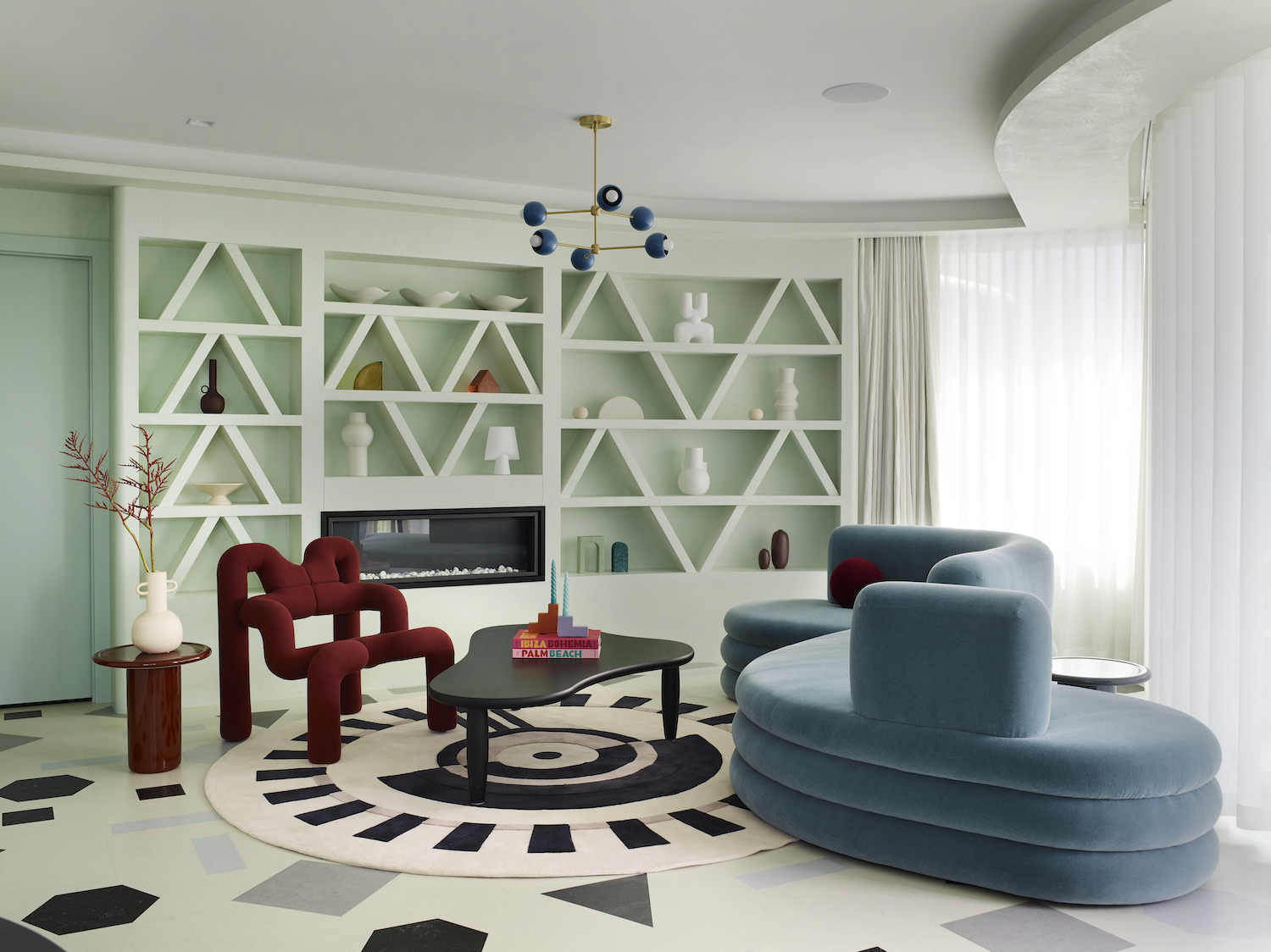
Whether you want to organize clutter or add interest to a sparse wall, the power of bookshelves to enhance a space should not be underestimated.
“Traditionally, bookshelves have been used as a practical piece of furniture to store books and personal items, often just disappearing into the background. But we think they can be so much more than this,” says Simone Gordon, Interior Designer and Co-Founder of Owl Design. “They should be a feature of your living room in their own right and a place where you can express your personality: from minimal simplistic beautifully joinery, to showcasing a few choice ceramics, to using fun shapes and colors, with a clever mix of display and hidden storage.”
But before getting into the creative possibilities of bookshelves, what are the practical considerations to be aware of?
How deep should bookshelves be?
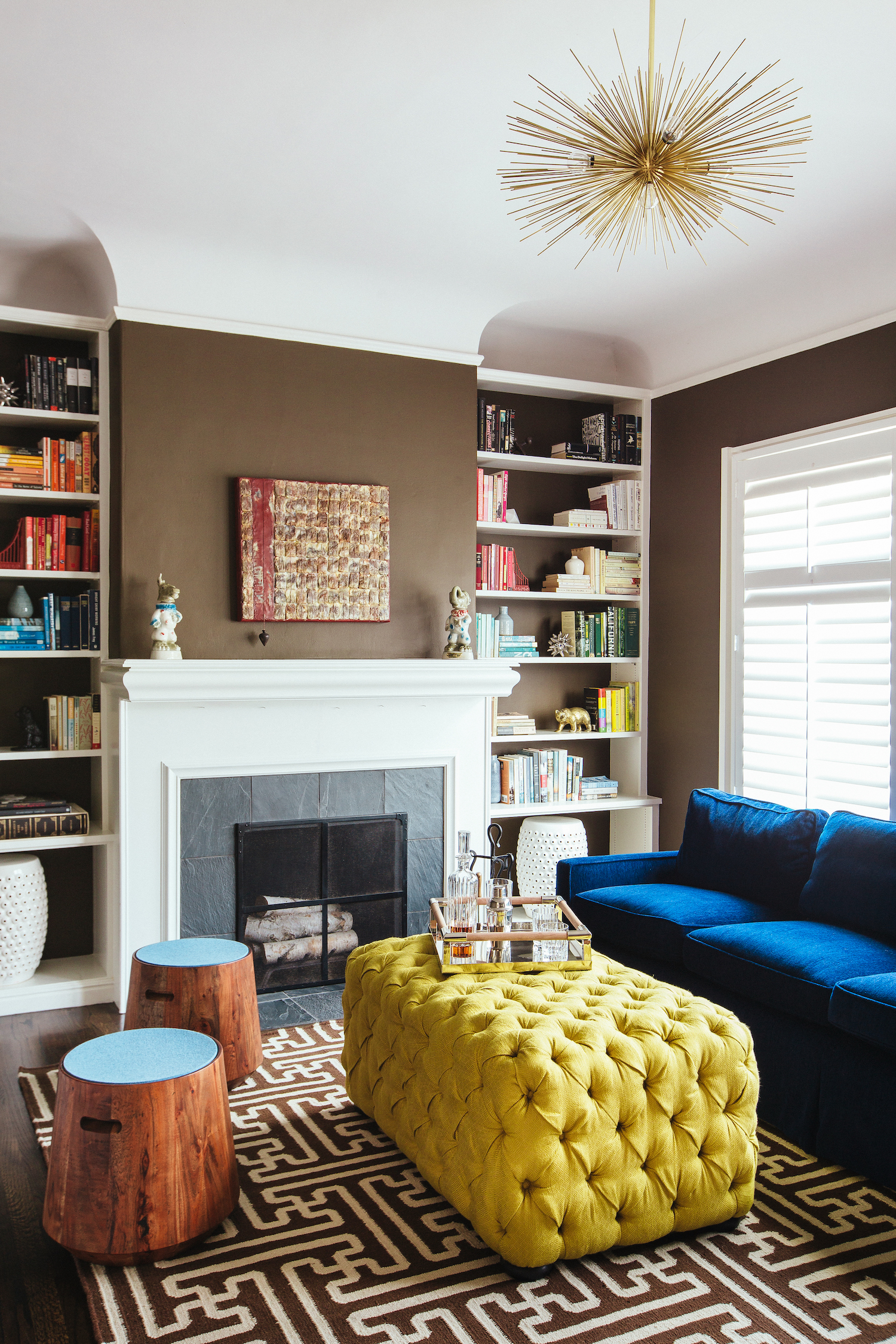
The first step is to think about what you want to display on your bookshelves. Whether it’s books, ceramics, or trophies, you need to make sure that the objects will fit. “You need to decide what you'd like to display in that specific room,” says Noz Nozawa, Interior Designer and Founder of Noz Design. “For instance, in our bedroom, my husband and I keep novels and paperbacks; but in the main living space, our shelves house cookbooks, objects from our travels, and nonfiction books — which guests might pull down from a shelf and leaf through casually.”
Let your display items guide the dimensions of your shelves. “I would recommend at least 9" depth (quite shallow, but fine for novels) and up to 16" depth (I've not come across a coffee table book that doesn't fit a shelf that deep),” says Noz Nozawa at Noz Design.
“A nice middle-ground is 12" if you want to store a mix of both types of books and objects; but I do like to optimize for only as deep as you need, to avoid having the trouble of books being pushed accidentally into the rear of the shelves.”
What else should you consider?
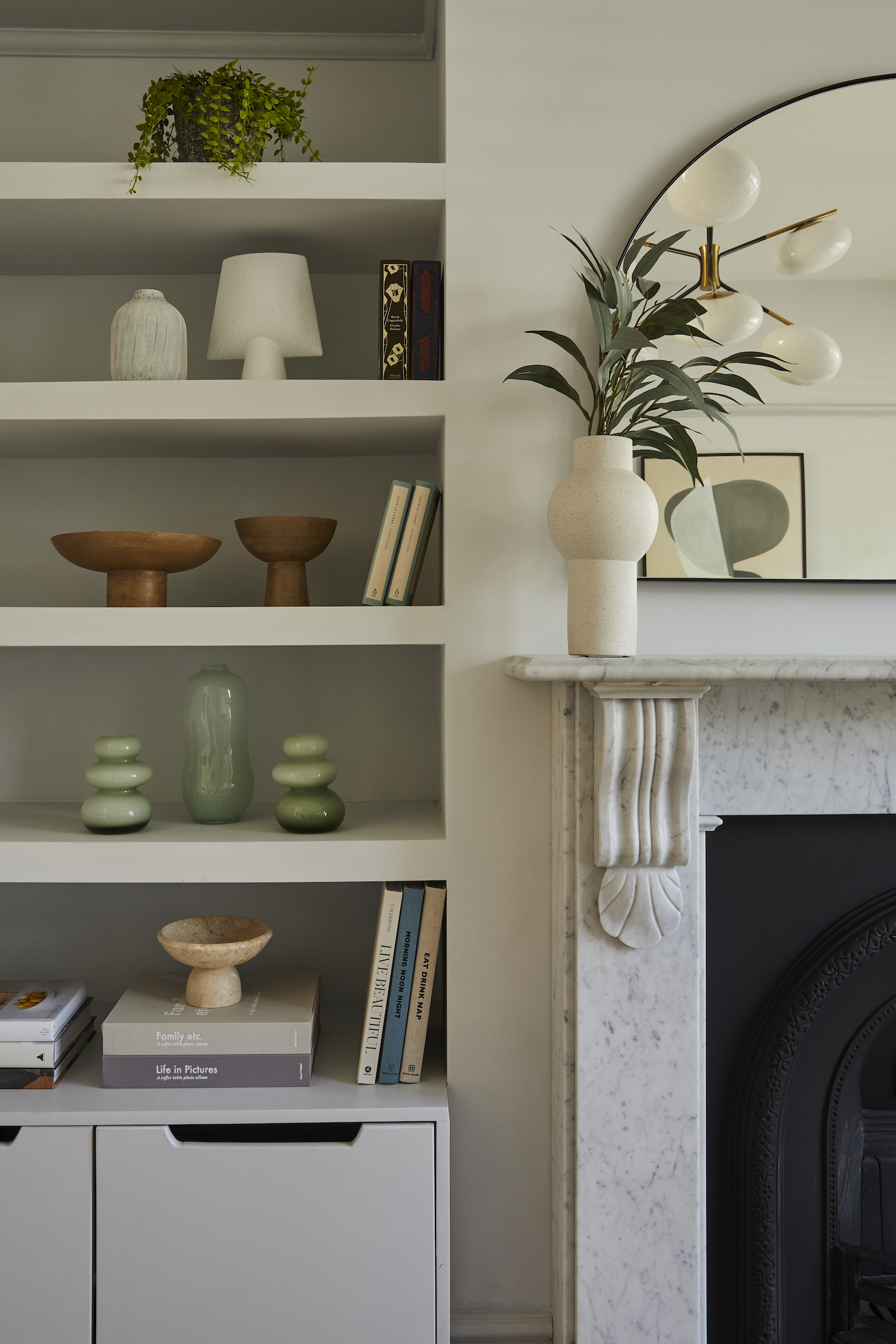
Before building your bookshelves, it’s also important to think about the proportions of the room. “If you have high ceilings, you need to consider how tall you want your bookshelves, as going all the way to the ceiling could be a bit overbearing (especially if you don’t have much you need to display anyway),” says Sophie van Winden, Interior Designer and Co-Founder at Owl Design. “Also, think about the thickness of the individual shelves. The chunkier the shelf the more noticeable it will be, so you need to consider if you want the shelves to disappear elegantly (consider a slim metal shelf here) or take center stage.”
When it comes to living room furniture, Noz Nozawa agrees: “A wall-to-wall bookshelf, whether it's built-in or a row of matching shelves, can dramatically impact the literal proportions and perceived density of a room. So I think the most important thing to consider is how your bookshelf's proportions will relate to the rest of the architecture. Does it look right under your window, or beside your hearth, or across that wall? If so, whether the shelf is large or small, it will suit the room — which I think is what matters. I've loved that built-in bookshelves that have been custom-fitted to the height of windows, or the height of a fireplace, or the width of a wall, are very popular lately. Custom built-ins suit a home's architecture so well”.
How to make a statement with bookshelves
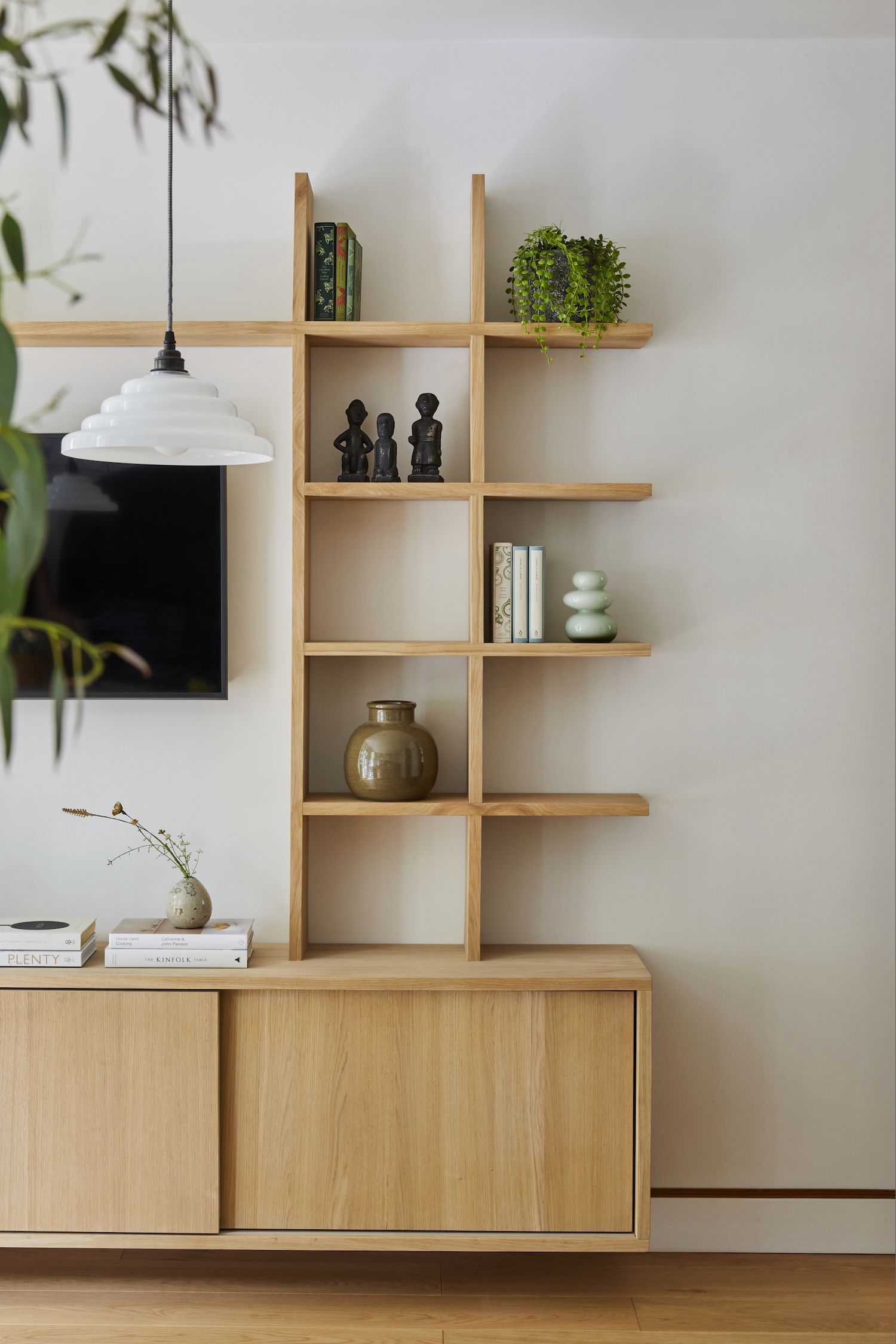
There are many ways bookshelves can liven up a space, such as with chunky shelving, contrasting colors, or a natural wood finish. But again, it’s important to keep functionality in mind.
“If you are a family of avid readers and have hundreds of books, you’ll need something sturdy and with lots of space for your ever-growing collection,” says Sophie van Winden. “If the shelves are for more aesthetic purposes, you could consider more unusual shapes within the design such as triangles or circles”.
Sophie continues: “We have designed quite a few playful, almost Memphis-style bookshelves, each with a fun element such as geometric shapes worked into the design or two-tone color blocking. This is a great way to add an eye catching focus to any room. And using unpainted natural wood is a classic style that will never date. It will add warmth and texture to a room, especially if you go for one with an interesting grain.”
Another option to consider is mid-century style ‘room divider’ shelves, which have made a comeback recently. “They are a great way of dividing up an open plan room without blocking all the light,” says Sophie. Noz Nozawa adds that open-back shelves can appear to “float” in a room, “creating functional separation between spaces”.
When it comes to building bookshelves, you’re certainly not short of options. Deciding on the right style and size might take some planning, but your future self (and your books) will thank you for it.
Be The First To Know
The Livingetc newsletters are your inside source for what’s shaping interiors now - and what’s next. Discover trend forecasts, smart style ideas, and curated shopping inspiration that brings design to life. Subscribe today and stay ahead of the curve.
Kate Hollowood is a freelance journalist who writes about a range of topics for Marie Claire UK, from current affairs to features on health, careers and relationships. She is a regular contributor to Livingetc, specializing in reporting on American designers and global interiors trends. Based in London, Kate has also written for titles like the i paper, Refinery29, Cosmopolitan and It’s Nice That.
-
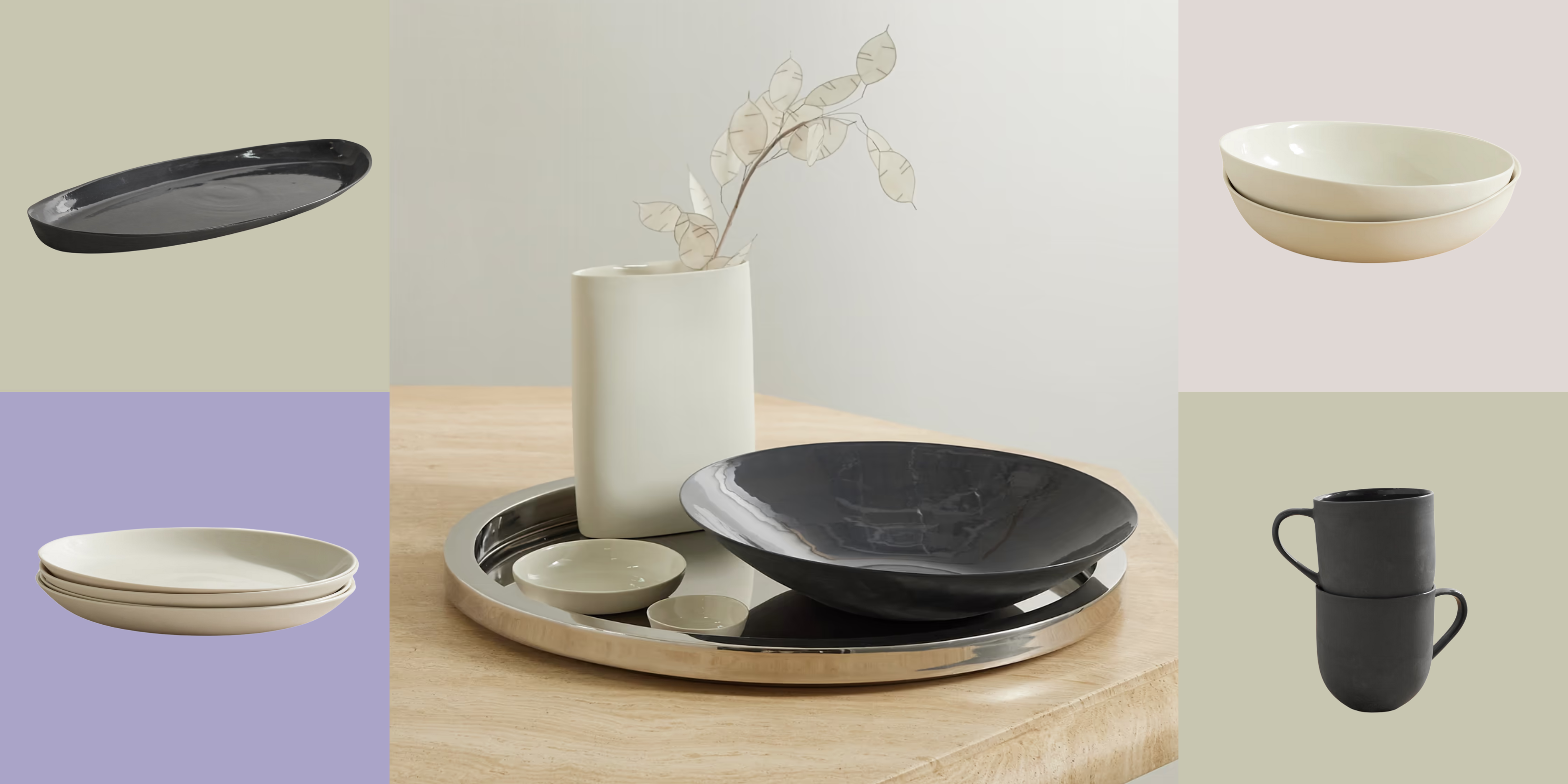 Turns Out, Sustainable Design Can Be Chic, and Net-a-Porter's 'Net Sustain' Curation Is Proof — Here's What I'm Shopping
Turns Out, Sustainable Design Can Be Chic, and Net-a-Porter's 'Net Sustain' Curation Is Proof — Here's What I'm ShoppingFrom the Net Sustain collection, Mud Australia's homeware is not only design-oriented, but eco-focused, too
By Devin Toolen
-
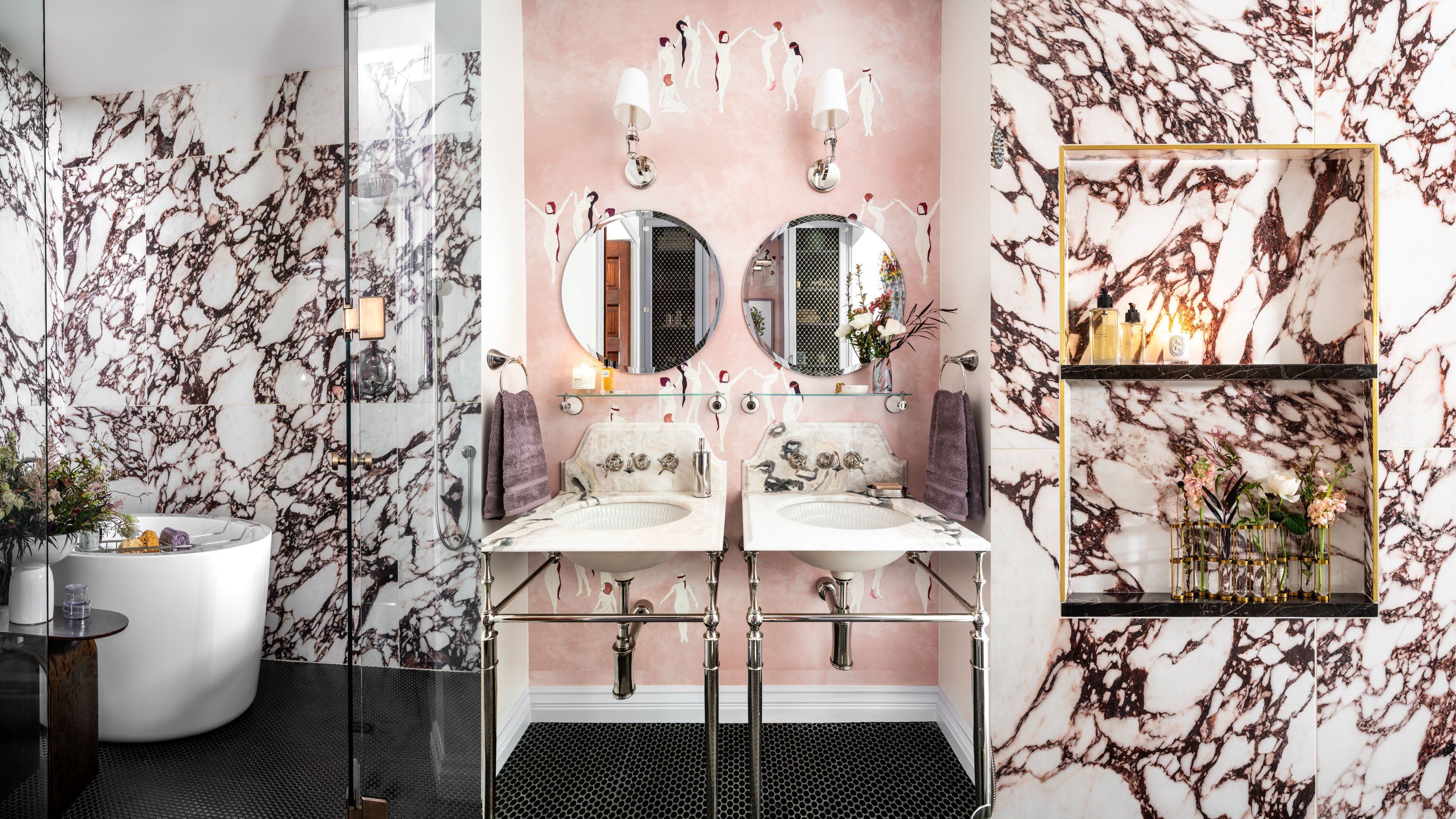 Before and After — How This Jewel-Box Bathroom Made the Most of Its Proportions With Maximalist Design and a 'Soaking Tub'
Before and After — How This Jewel-Box Bathroom Made the Most of Its Proportions With Maximalist Design and a 'Soaking Tub'This design offers a masterclass on creating a luxurious bathroom that is equally playful and elegant.
By Maya Glantz